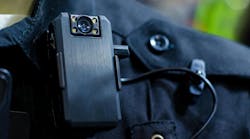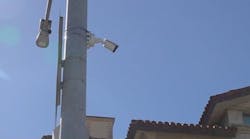WASHINGTON, D.C. -- All people convicted of drunken driving in the country should have interlocks installed on their cars to prevent a repeat offense, the National Transportation Safety Board unanimously recommended on Tuesday.
The recommendation to state legislatures, which is non-binding, goes to 33 states that don't currently require interlock devices for all convicted offenders. The other 17 already require the devices, which are aimed at deterring repeat offenses.
Interlocks are devices typically mounted on the vehicle's dashboard, which require motorists to breathe into them, to test whether they have consumed alcohol. The device won't allow the vehicle to start until the motorist passes the test.
The NTSB is an independent federal agency that investigates crashes and transportation safety issues and makes recommendations to other government agencies, Congress and the states to improve safety in the skies, rails and roads.
The board's recommendation was based on a study of accidents involving wrong-way drivers, such as entering a highway on an exit ramp or simply veering into the opposing lane of traffic. The study found that these crashes, which usually occur at night or on weekends, kill an average of 360 people each year in 260 accidents.
"We initiated this series of investigations because wrong-way accidents are among the most deadly types of motor vehicle accidents a€Â" they usually occur at high speed and are primarily head-on collisions," said Deborah Hersman, the board chairman.
The study analyzed 1,566 fatal wrong-way crashes that killed 2,139 people. One crash Oct. 14, 2011, in Fernley, Nev., killed a mother of two a€Â" in the second wrong-way crash in that city that night.
The report focused on wrong-way accidents in California, Colorado, Kentucky, Nevada, Pennsylvania, Texas, Virginia and Wisconsin. Collisions that the board had investigated in detail involved 17 passenger vehicles, two buses, one church activity bus and four heavy vehicles.
Two common threads found in the report were drivers impaired by alcohol or elderly drivers.
About 60(PERCENT) of the accidents involved drivers with high blood-alcohol content. And not all drivers were tested, so board members say the percentage could be higher.
Drivers at least 70 years old were involved in 15(PERCENT) of the accidents.
The board urged state and local officials to improve signs around highway ramps, particularly those at T-intersections rather than clover-leaf exchanges. The board also urged GPS devices to have alerts when drivers enter roads going the wrong way.
"These will help older drivers, but it will help all of us," Hersman said.
Copyright 2012 Gannett Company, Inc.All Rights Reserved



